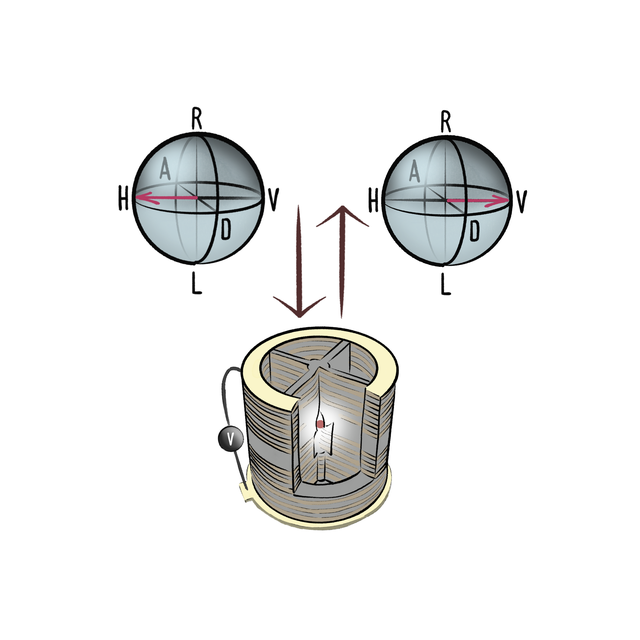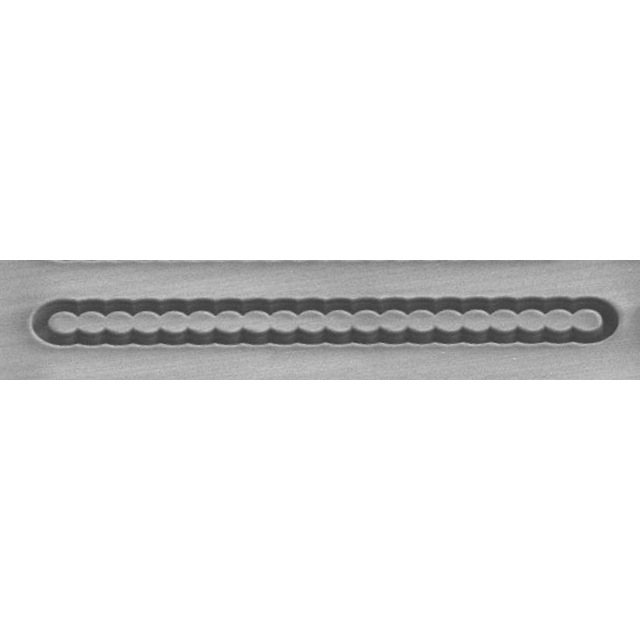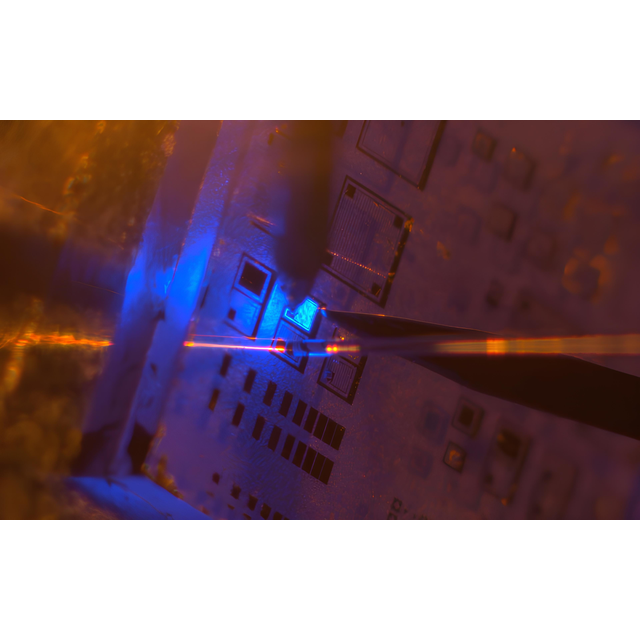In the framework of optical quantum computing and communications, a major objective consists in building receiving nodes implementing conditional operations on incoming photons, using a single stationary qubit. In particular, the quest for scalable nodes motivated the development of cavity-enhanced spin-photon interfaces with solid-state emitters. An important challenge remains, however, to produce a stable, controllable, spin-dependent photon state, in a deterministic way. Here we use an electrically-contacted pillar-based cavity, embedding a single InGaAs quantum dot, to demonstrate giant polarisation rotations induced on reflected photons by a single electron spin. A complete tomography approach is introduced to extrapolate the output polarisation Stokes vector, conditioned by a specific spin state, in presence of spin and charge fluctuations. We experimentally approach polarisation states conditionally rotated by , π and
, in the Poincaré sphere with extrapolated fidelities of (97 ± 1) %, (84 ± 7) %, and (90 ± 8) %, respectively. We find that an enhanced light-matter coupling, together with limited cavity birefringence and reduced spectral fluctuations, allow targeting most conditional rotations in the Poincaré sphere, with a control both in longitude and latitude. Such polarisation control may prove crucial to adapt spin-photon interfaces to various configurations and protocols for quantum information.
For the development of quantum communications and optical quantum computing, a major concern is to control light-matter interaction at the most fundamental level: the qubits (quantum bits) associated with single particles. Spin-photon interfaces are one of the most interesting platforms from this point of view, as they allow to couple a spin qubit (potentially serving as a computational node) with messenger qubits: photons. A major challenge is to effectively use such interfaces as receiving devices for incoming photons – capable of modifying the state of the received photons via interaction with the spin qubit.
A research team led by Dr. Loïc Lanco at C2N, the Centre for Nanoscience and Nanotechnology (CNRS - Université Paris Saclay - Université Paris Cité), has studied a spin-photon interface consisting of an artificial atom – an InGaAs semiconductor quantum dot – embedded in a photonic structure – an electrically-contacted micropillar cavity. The goal of such an interface is to establish a perfect mapping between the spin state of an electron, confined in the quantum dot, and the polarisation state of a photon reflected by the device.
In these experiments, carried out under a magnetic field and at liquid helium temperature, the C2N team demonstrated a giant optical polarisation rotation induced by the spin of a single electron. Despite very fast fluctuations of the spin orientation, they were able to extrapolate the conditional polarisation state of reflected photons, when the spin points upwards.
Contrary to all previous works, the C2N scientists were able to carry out polarisation tomography - i.e. to determine the complete state of the polarisation qubit, represented in the Poincaré sphere describing all possible states. Thanks to spin-photon interfaces that have been greatly optimized compared to previous achievements, the team was able to demonstrate a complete rotation (180° in the Poincaré sphere) of the polarisation state, and analyse the residual depolarisation induced by environmental fluctuations.
"Our tomography approach, to measure the polarisation rotation at the output of our system, gives access to the complete characteristics of the polarisation state: its longitude and latitude in the Poincaré sphere, but also the polarisation purity," said Dr. L. Lanco, a teacher-researcher at Université Paris Cité. "As we expected, the spins of the nuclei constituting the quantum dot induce spectral fluctuations, which limit the polarisation purity of the reflected photons, but do not limit the rotation angles that can be reached, in latitude or longitude."
This work is one of the first steps towards the development of more efficient spin-photon and photon-photon logic gates, which could serve as building blocks for a future quantum network performing quantum computation with photons.
References
Giant optical polarisation rotations induced by a single quantum dot spin
E. Mehdi1, M. Gundín1, C. Millet1, N. Somaschi2, A. Lemaître1, I. Sagnes1, L. Le Gratiet1, D. A. Fioretto1, N. Belabas1, O. Krebs1, P. Senellart1 & L. Lanco1
Nature Communications volume 15, Article number: 598 (2024)
DOI https://doi.org/10.1038/s41467-023-44651-8
1Centre de Nanosciences et de Nanotechnologies, CNRS, Université Paris-Saclay, Université Paris Cité, 91120, Palaiseau, France
2Quandela, 7 rue Leonard de Vinci, 91300, Massy, France









